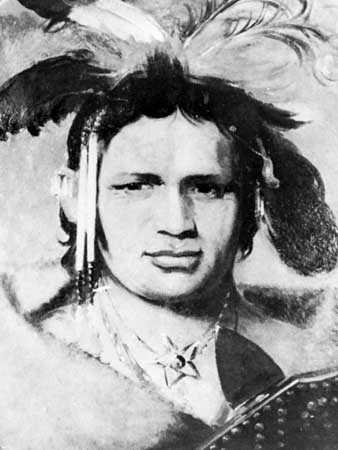Menominee
Michigan, United States
city, seat (1861) of Menominee county and the southernmost city in the Upper Peninsula of Michigan, U.S. It is located on Green Bay (an embayment of Lake Michigan (Michigan, Lake)) at the mouth of the Menominee River opposite Marinette, Wis., with which it is connected by three bridges. In 1796 a fur-trading post was established there. Lumbering began in 1832, reached its peak in the 1890s, and ended in 1930. Manufactures include paper products, furniture, industrial and electrical equipment, and helicopters. Dairying (notably cheese production) is important, though the industry has been in decline in the area since the 1980s. Menominee—named for the Menominee tribe, whose name refers to the wild rice once gathered along the riverbanks—is also a hunting resort and fishing port. The Menominee County Historical Museum has exhibits on the area's Native American cultures and on the fur, timber, and fishing industries. J.W. Wells State Park is about 25 miles (40 km) northeast. Inc. 1883. Pop. (2000) 9,131; (2005 est.) 8,753.
people
also spelled Menomini
 Algonquian (Algonquian languages)-speaking North American Indians who, when first encountered by the missionary-voyageur Jean Nicolet (Nicolet, Jean) in 1639, lived along the Menominee River, now the eastern portion of the boundary between Wisconsin and the upper peninsula of Michigan.
Algonquian (Algonquian languages)-speaking North American Indians who, when first encountered by the missionary-voyageur Jean Nicolet (Nicolet, Jean) in 1639, lived along the Menominee River, now the eastern portion of the boundary between Wisconsin and the upper peninsula of Michigan.The traditional Menominee economy was based, in order of importance, on gathering wild rice and other wild plants; cultivating corn (maize), squash, beans, and tobacco; and fishing and hunting. Before colonization the people lived in permanent villages of dome-shaped houses. Menominee people reckoned kinship through clan membership, and individuals from the same clan were not allowed to marry. The clans, in turn, belonged to one of two major divisions, or moieties, within the tribe. After the advent of the fur trade the Menominee spent increasing amounts of time dispersed in mobile bands over a wide territory, particularly for winter hunts.
In 19th-century treaties the Menominee ceded land to the U.S. government yet retained the permanent right to use their former territory for hunting, fishing, and other subsistence activities. In 1852 some 2,000 members of the tribe were removed to a reservation on the upper Wolf and Oconto rivers in Wisconsin. Beginning in 1872, a tribally owned lumber mill operated under government supervision, providing the community with jobs and income; in the early 21st century the tribe remained heavily invested in the mill and was an innovator in the sustainable production of lumber.
In the mid-20th century the U.S. government instituted a movement known as “termination,” in which tribes lost federal recognition and the benefits and protections associated with that status. The Menominee reservation was terminated in 1961; the former reservation lands became a county within the state of Wisconsin, and a corporation, Menominee Enterprises, Inc., was created to hold and administer tribal assets. Soon after termination many tribal members became concerned about the loss of services and self-determination that had been ensured by reservation status; issues of particular concern included the elimination of subsidized health care, which left the community with no hospital and no resident physician, and the sale of former reservation lands to non-Indians. The Menominee began agitating for the restoration of federal status, which was granted by the U.S. Congress in December 1973.
Population estimates indicated more than 9,500 individuals of Menominee descent in the early 21st century.
- Chartism
- Chartres
- Chartres Cathedral
- Chase Manhattan Corporation, The
- Chase, Mary Ellen
- Chase, Philander
- chaser
- Chase, Salmon P.
- Chase, Samuel
- Chase, William Merritt
- cha-shitsu
- chasing
- Chasles, Michel
- chasseur
- Chassériau, Théodore
- Chastelard, Pierre de Bocosel de
- Chastellain, Georges
- chaste tree
- chastushka
- chasuble
- chat
- Chateaubriand, François-Auguste-René, vicomte de
- chatelaine
- Chatham
- Chatham Islands